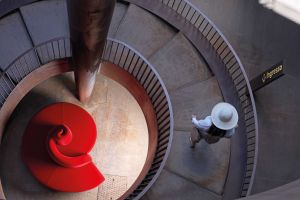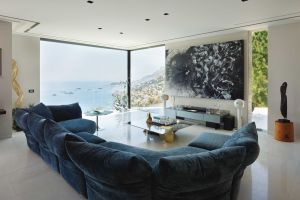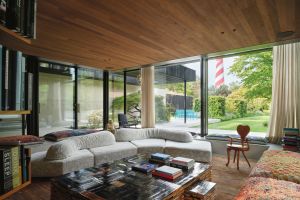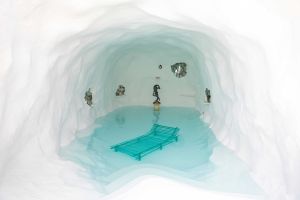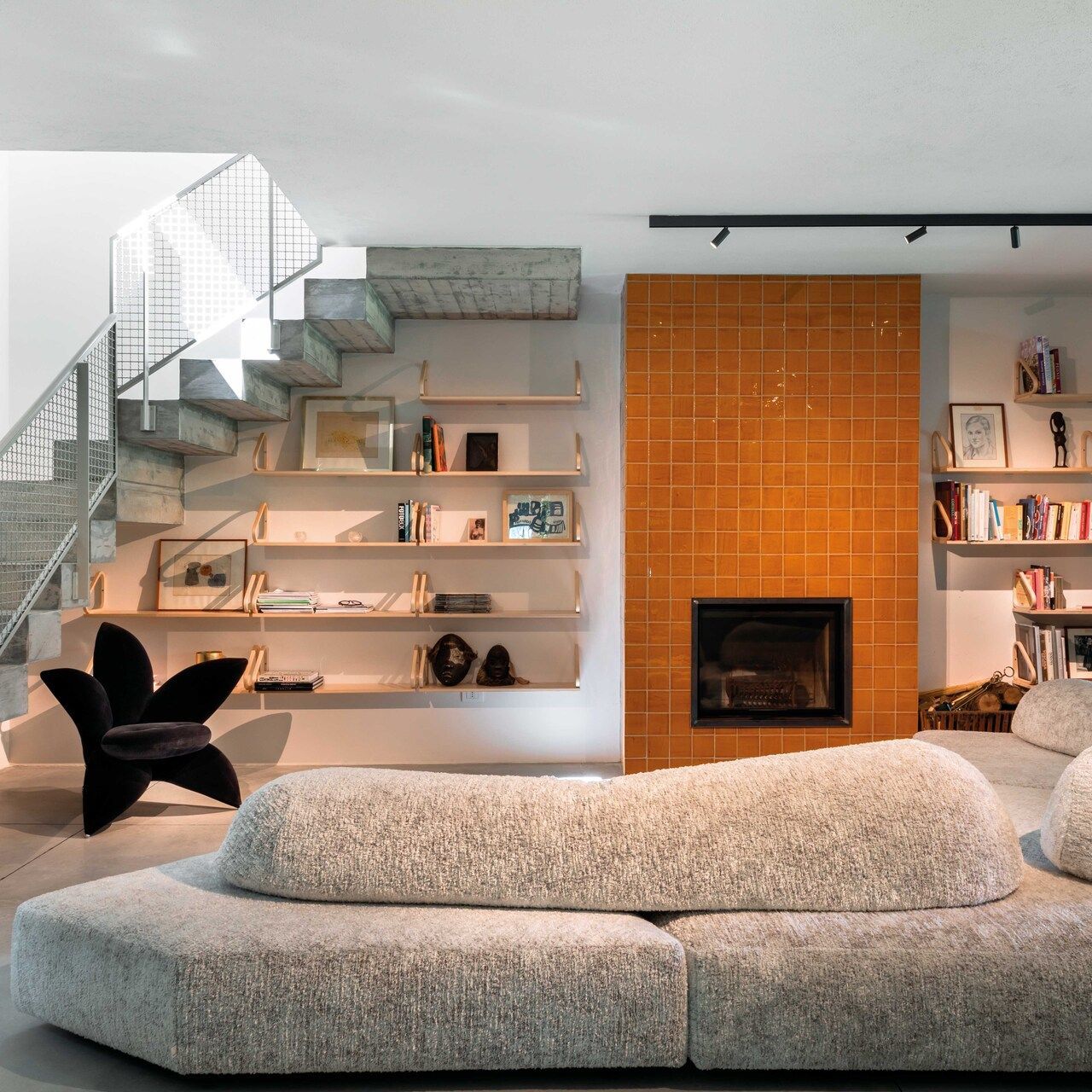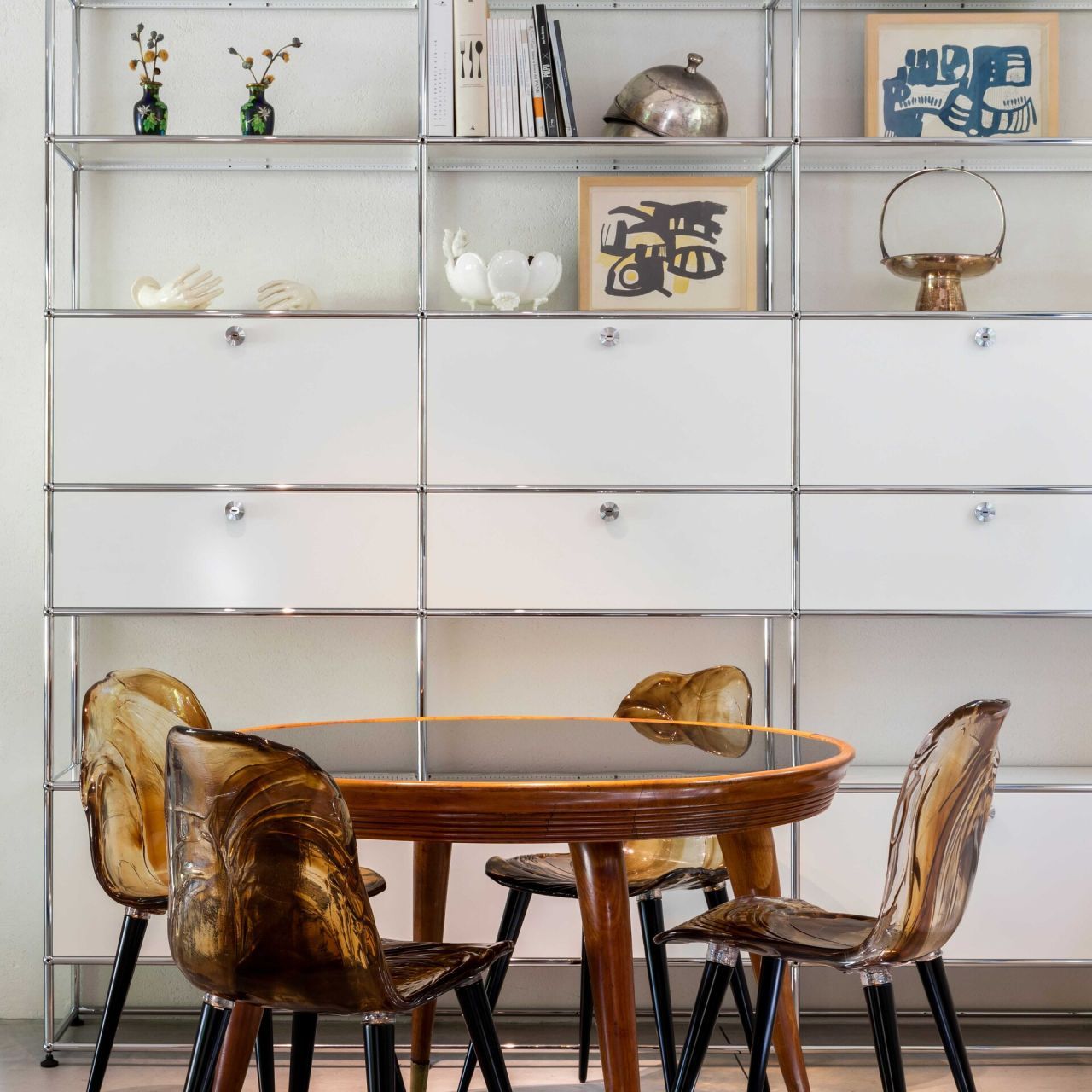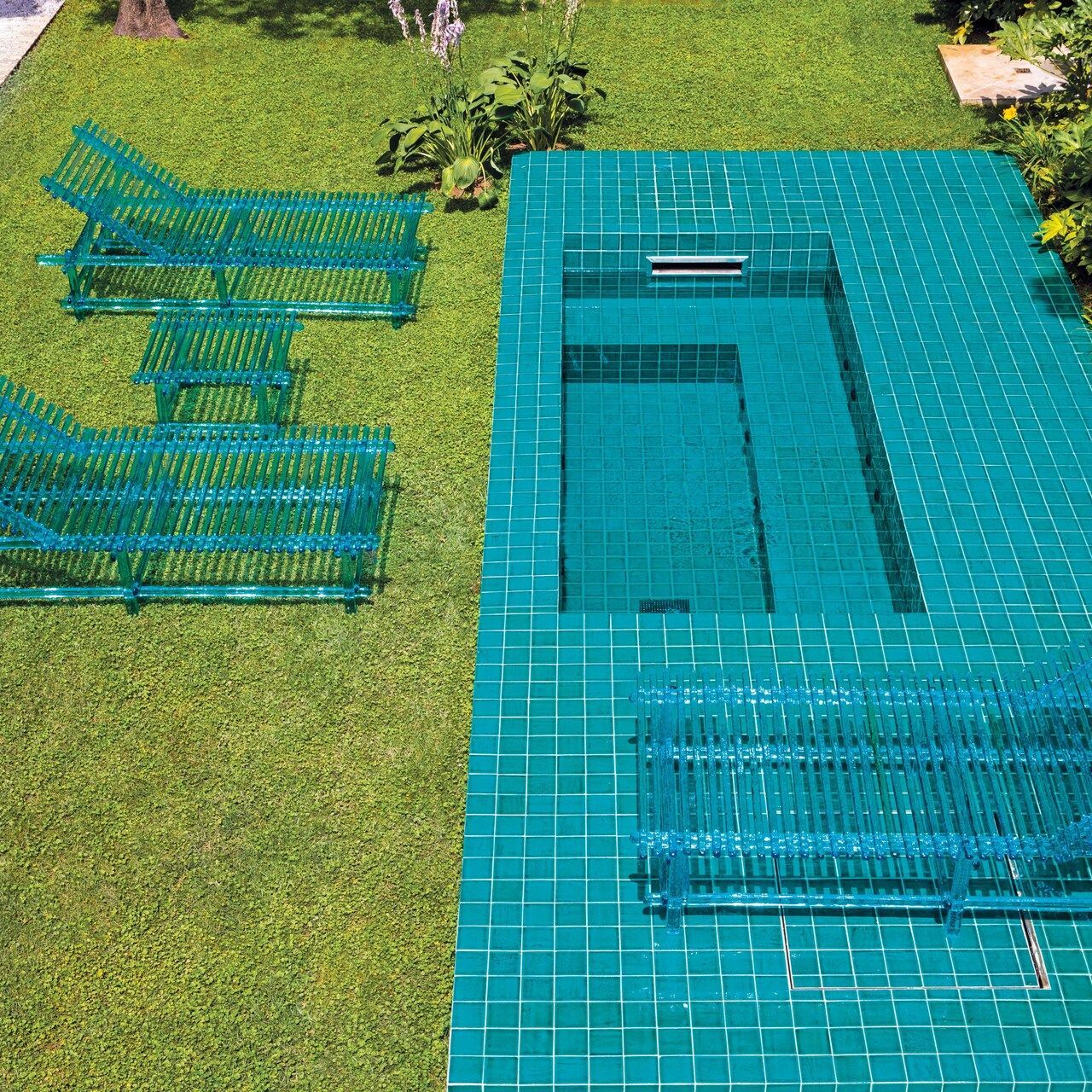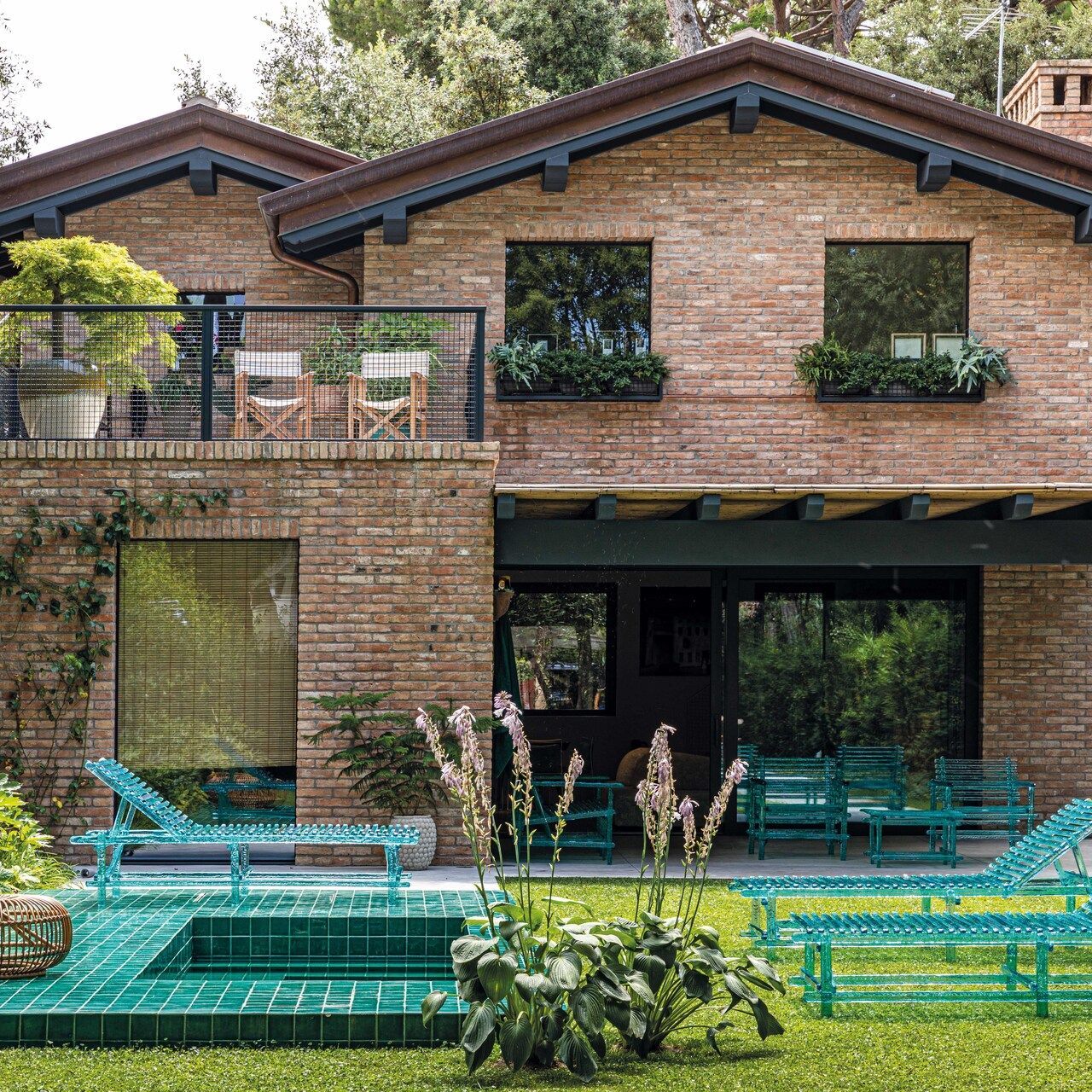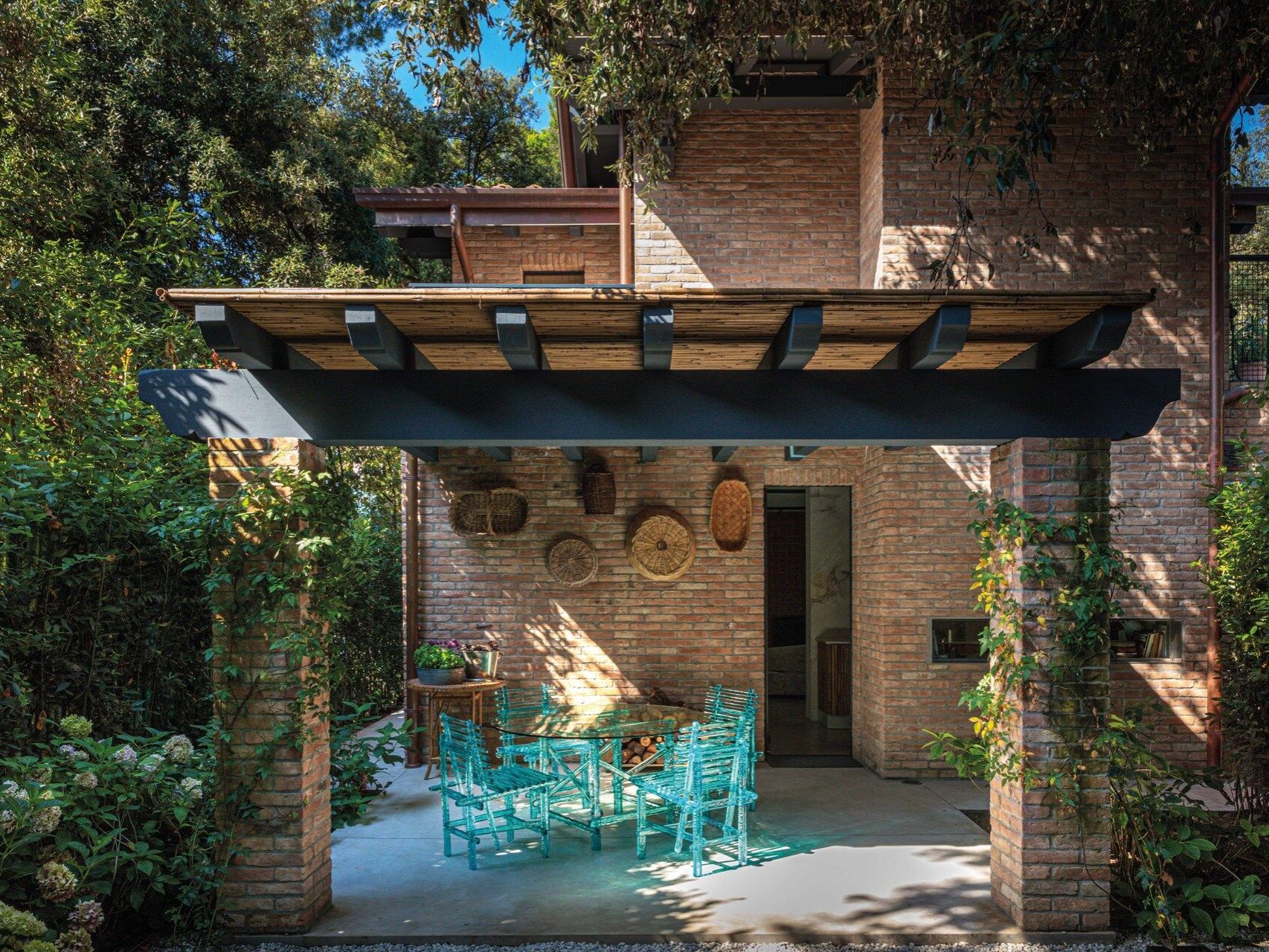
October 2023
Laura Arrighi
At Chiara’s place
An intimate place of memories in the pinewood of Forte dei Marmi
Home is a reflection of who we are and what we become. When architects design a home, they often try to project a set of values and virtues into the space that represent them in some way, and that they want to pass on to future generations. But then, little by little, the owners take possession of the spaces, turning them into their actual home. To describe a house, it is essential to knock on the door and be welcomed in it. Especially if it is a house like Chiara’s, which is a treasure trove of memories.
When I met Chiara, all the questions I had prepared - about the layout of the villa, the elevations, the relationship between architecture and furnishings - seemed obvious, superficial. To understand the value of this small villa in Forte dei Marmi, one has to go through the history, thoughts and emotions of those who wanted, imagined and created it. Chiara has lived here since 2017. She has been looking for that house for a long time. Chiara wanted something that would impress her. And to start again from scratch. ‘When I saw it, I immediately thought: that’s it. It was in need of renovation, but I could see its full potential. There were several aspects that struck me: the fact that it was completely immersed in the pine forest, in the green, and at the same time it was a stone’s throw from the sea. In the end, I think the most complex and time-consuming thing in the process of “making a home” is looking for it, finding the right one, the one that gives you a certain energy, in the right place, at the right time.’
The etymology of the word ‘inhabit’ reveals the close relationship between the individual and the domestic space. Dwelling, habit and inhabiting have the same root as the Latin word habere, which means possession, but can also be found in attitude, inclination, disposition and appearance. These are all concepts that contribute to determining the identity of a person and the environment in which that person operates. Living therefore means being accustomed to a place, making it coincide with what we are used to having, with everything we carry with us. ‘Since I was a child’, says Chiara, ‘I’ve always had a passion for houses, I’ve always been attracted by the idea of home. I lost my mother when she was very young and then my father. I believe that this has unconsciously conditioned me, leading me to continually search for a place in which to recreate that “nest” that the childhood home is for a child, in which they experience family affection. Trying to fill a gap makes me want to create a new home, to revive that feeling of warmth and love.’
Reflecting on what home actually is, philosopher Emanuele Coccia defines it ‘first and foremost as a vast container, an enormous trunk in which we collect above all objects and things. [...] The house begins with objects: the walls, the ceilings, the floors. None of these objects is able to perform its function separately [...] the bed that creates the bedroom and the table that gives life to the dining room. It is the plates, the oven and the pots and pans that transform an abstract rectangle into a kitchen. The box-house is, from a technical point of view, a form of desert, a purely mineral space, a sandcastle, until it is populated with objects. We never have a relationship with its walls. Rather, we have a relationship with objects. We really only inhabit objects. Objects house our bodies, our gestures. They attract our eyes.’ Those objects are nothing more than little pieces of us, memories, gifts, things that we have needed at some point in our lives and that we decide to keep. Inhabiting a house is therefore also a bit of being that house, not just owning it, but filling it with our aspirations, our needs, our desires. Chiara’s house is all this. 'My mother was a painter’, she says, ‘and I have many paintings of her, memories that have become part of the houses I have lived in and live in.
This idea of building domesticity through objects has led me to look with interest at all the things that populate my home.
I fell in love with furniture, with antiques that I look for everywhere and that hold intense histories. Stories that I do not know, but that I can enjoy imagining. In short, everything I didn’t get in terms of affection when I was young, I get from my surroundings.’ This attitude of the owner is characterized by a kind of animism, which gives life to everything. There is a story behind every object. The finishes, furnishings and decorations tell of friendships, affections, journeys and experiences. By buying something, Chiara establishes a deep relationship not only with the object but also with the person who offered her that ‘part of home’. It is as if that person also becomes part of the family. This is what happened with the architect who was in charge of the renovation. ‘Meeting Michelangelo was completely accidental’, Chiara says. ‘I knew that from a bureaucratic point of view I would have to have a technician and I didn’t have one in mind. One day, while walking around Forte dei Marmi, I saw a place called The Loft. It intrigued me: it wasn’t glossy, but it was very lived-in. I later found out it was a firm of architects. I met the founder and we got on immediately: he understood my tastes, what I wanted. I was attracted by this and so I entrusted him with the project, even though I didn’t want my house to reflect the mood of those he had shown me in his portfolio. I was convinced by Michelangelo’s listening skills and the empathy I felt when I met him.’ In the book La casa è un sogno (The house is a dream), Massimiliano Giberti explains that ‘the house is one, but different every time. It is not about the house as an individual artefact, but about what the word house itself represents. We return home, we run away from home, we look for a home, always using the singular form, because only one home can be a home, even if we own two, three or a hundred. At the same time, the house changes, although the walls, stairs and windows remain the same. Its transformation has more to do with what we are willing to leave behind.’
When we speak of a house, even if we immediately think of an architectural artefact, in reality we come across a word full of meanings, which have more to do with what the house represents than with what it physically is. It is no coincidence that if we are asked to imagine a house, we immediately picture our own. ‘Originally’, Chiara explains, ‘my house was the annex of a villa. Michelangelo completely altered the spaces. He cut up the rooms, the bathrooms. While he worked on defining the space and the lighting, I worked on the finishes and the furniture. I like to follow the renovation phases and I’ve often discussed this with the designer. I don’t want the house to be aseptic; I want it to be very personal. It’s not easy to give “warmth” to a space from day one.’
Going into detail about some of the choices: the bricks in the façade have both a decorative and a technical function. They belong to the tradition of the place where the house is located, and at the same time they protect it. The swimming pool tiles, in shades of teal, blend in with their natural surroundings. The marble walkway leading to the house is a detail found in Mario Botta’s Petra winery. On entering the house, the kitchen walls covered with marble slabs rising to the ceiling create a cosy atmosphere, thanks also to the bamboo cane wall units, which warm the atmosphere and contrast with the shiny marble. Functionality is another important aspect.
The most important thing is not to be in a hurry. A house needs time to be “filled” and defined, and it is an ongoing process.’
The kitchen wall unit, for example, moves on wheels and becomes an additional worktop. For the living room, I chose Edra’s On The Rocks sofa. I had to think of a solution for the space, which is relatively small. I wanted a functional sofa, with a 360-degree seat, that was enveloping and not just an aesthetic object. On The Rocks is perfect and meets all these needs and wishes. It gives me the idea of home, which for me is priceless. In the guest room is Sherazade. Edra products are objectively masterpieces. My first was the Standard, bought some years ago. Then I got the Favela chair. Getting to know the company well and discovering all the passion behind each item gives added value to the products, which are always magnificent.’ These, like other contemporary pieces, are often combined with objects found here and there, even in flea markets. “The table might look like a Gio Ponti - says Chiara - ‘Then there are the paintings, which have a history. There are works by my mum, the most significant ones, small ones, you find them leaning around the house. I haven’t brought the bigger pieces in yet. The most important thing is not to be in a hurry. A house needs time to be “filled” and defined, and it is an ongoing process.’
 |
Laura Arrighi Architect with a PhD in Design, and freelance web writer and editor. She mainly works in interior decoration, design and fashion and has a special interest in the hybridization of different disciplines. She juggles writing, research, teaching and design, as she works for public institutions and some of the most important Italian architectural firms. |





